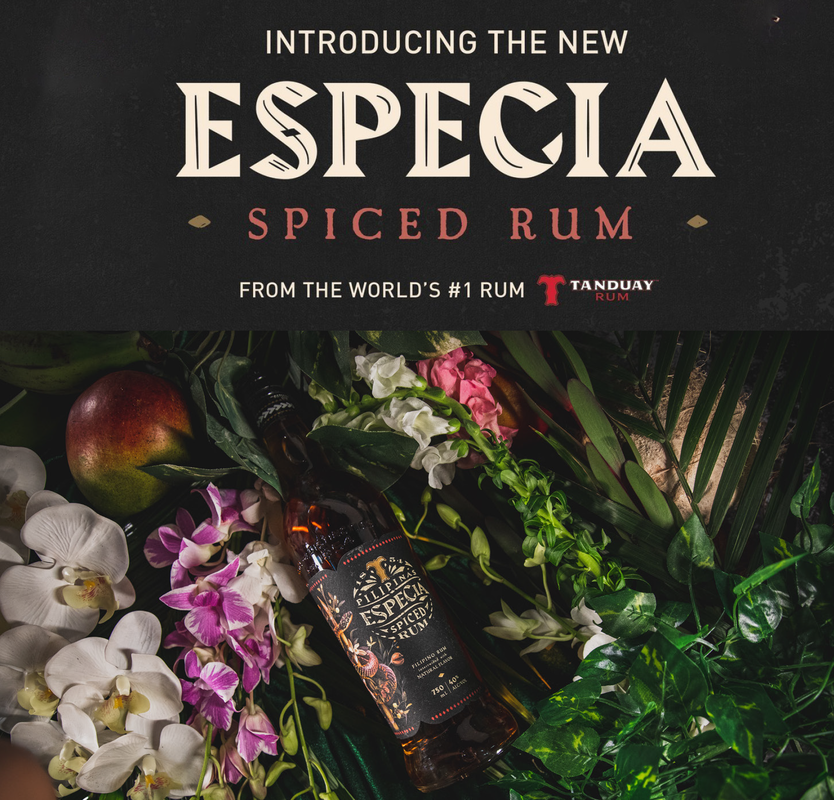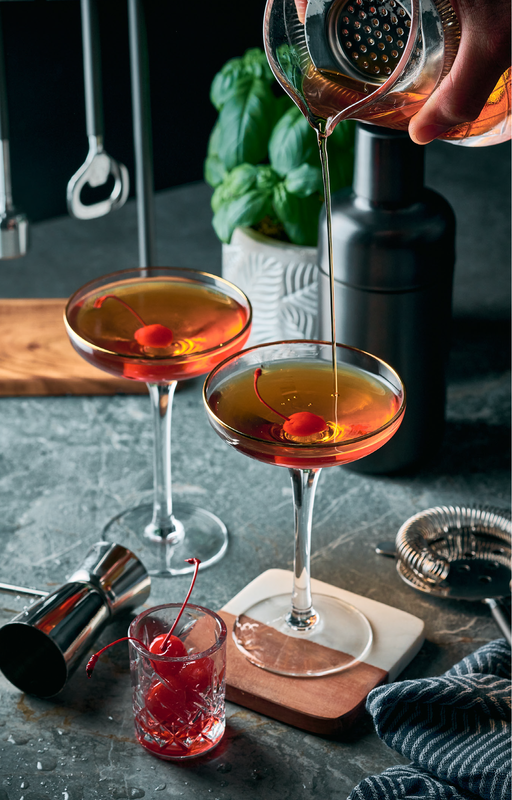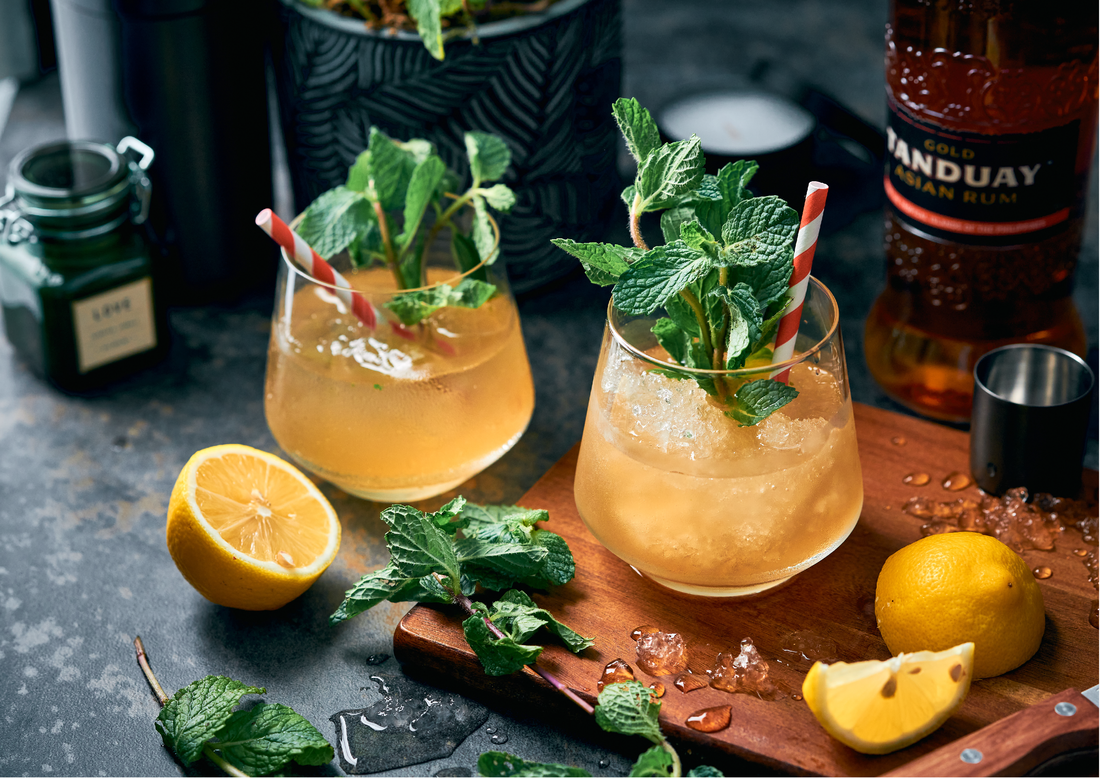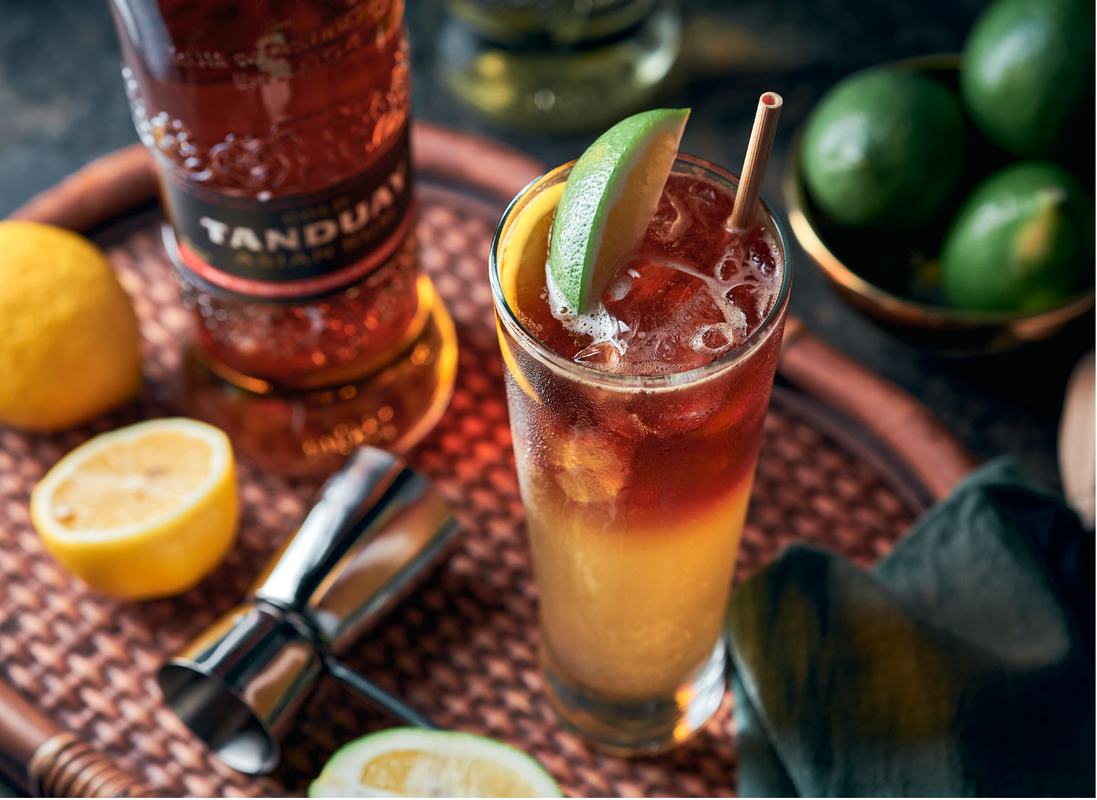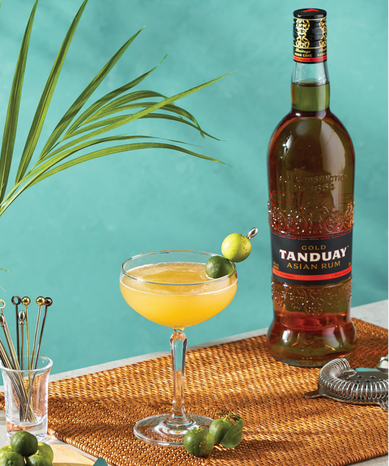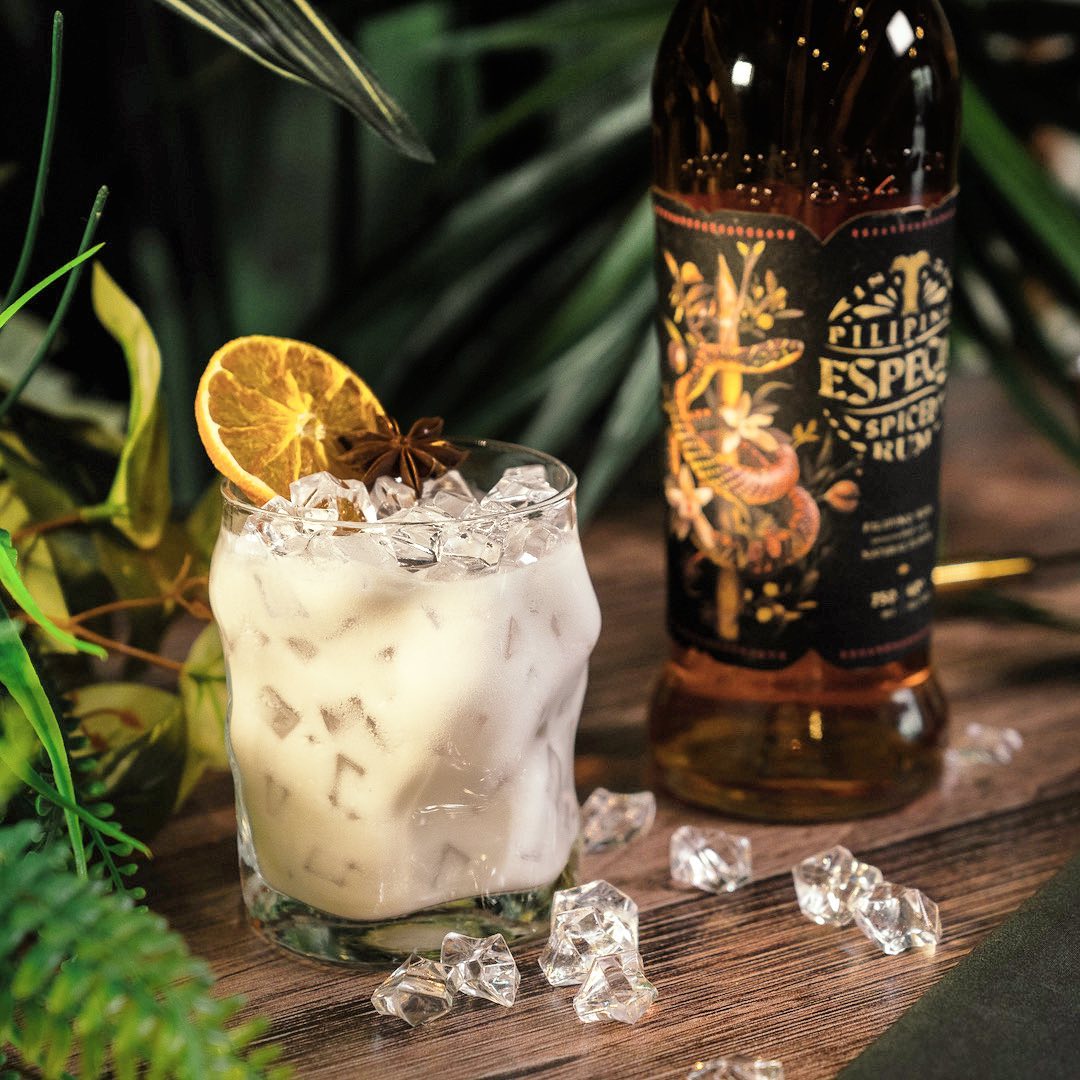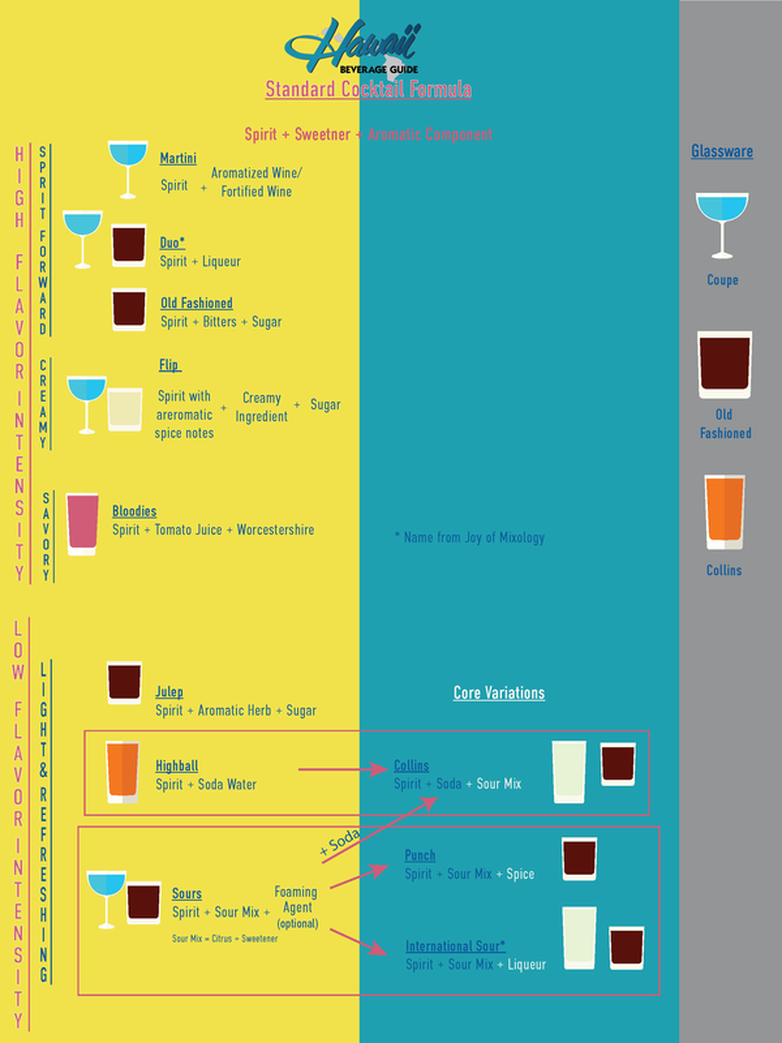By: Brent Nakano
The flavor profile
Created to capture the tropical flavors of the Philippines, Tanduay Especia Spiced Rum celebrates the tropical paradise of Southeast Asia and the Paradise Flying snake found its lush forests. Tanduay provides the following insight into the spice selection:
•Tanduay Gold, as a base rum, provides a richness of molasses and a deep and sweet foundation.
•Ginger ignites the palate and is inspired by the snake's fiery nature.
•Cloves contribute an exotic and aromatic touch.
•Vanilla, which spans from start to finish of every sip, adds a soothing and indulgent layer that embraces the other flavors and contributes velvety notes.
•Cinnamon evokes the vibrant sun-kissed earth.
•Coconut takes you on a journey to pristine beaches and swaying palm trees.
The bottle
Tanduay Especia is personified by Chrysopelea, the Paradise Flying snake. Its graceful movements through the lush Filipino forest foliage resemble the harmonious blend of spices and rum. Tanduay notes, “Stare long enough at the trees here and you might see the glimmer of a green scale, the flicker of a forked tongue and then, lifted by an ancient magic, a snake slithering through the humid air. The glider snake keeps a dark eye on the exotic ssspices that bloom throughout our jungle, so every ssssip of this spiced rum is imbued with exotic magic.”
Created to capture the tropical flavors of the Philippines, Tanduay Especia Spiced Rum celebrates the tropical paradise of Southeast Asia and the Paradise Flying snake found its lush forests. Tanduay provides the following insight into the spice selection:
•Tanduay Gold, as a base rum, provides a richness of molasses and a deep and sweet foundation.
•Ginger ignites the palate and is inspired by the snake's fiery nature.
•Cloves contribute an exotic and aromatic touch.
•Vanilla, which spans from start to finish of every sip, adds a soothing and indulgent layer that embraces the other flavors and contributes velvety notes.
•Cinnamon evokes the vibrant sun-kissed earth.
•Coconut takes you on a journey to pristine beaches and swaying palm trees.
The bottle
Tanduay Especia is personified by Chrysopelea, the Paradise Flying snake. Its graceful movements through the lush Filipino forest foliage resemble the harmonious blend of spices and rum. Tanduay notes, “Stare long enough at the trees here and you might see the glimmer of a green scale, the flicker of a forked tongue and then, lifted by an ancient magic, a snake slithering through the humid air. The glider snake keeps a dark eye on the exotic ssspices that bloom throughout our jungle, so every ssssip of this spiced rum is imbued with exotic magic.”
Production
Base fermentable: Grade A Molasses produced by Victorias Milling Company (VMC) in the city of Victorias in the Negros Occidental province of the Philippines, from heirloom sugarcane.
Water: Reverse Osmosis Filtration
Fermentation: 27-30 hours in an enclosed and temperature controlled fermentation system using a pure strain of Saccharomyces cerevisiae.
Distillation
Majority are column distilled as “light” rums which are ~95% [ABV] to reduce the congeners present, while maintaining the base sweet notes of molasses. Pot still rums are distilled to below 90% and range from
•Light esters which are slightly oily, slightly green.
•Medium esters which are flavorful, slightly creamy, slightly sweet.
•High esters which are sweet, fruity, slightly green.
Aging
•The various distillates are either blended with the light column distilled rums prior to aging or allowed to mature in separate barrels.
•Tanduay Gold consists of a blend of rums aged up to 7 years in ex-bourbon barrels.
Spice Addition: Natural Spice extracts are then added to the rum for flavor and product consistency.
For more on Tanuday Rum's production process
www.hawaiibevguide.com/tanduay-rum
Tasting Notes
Color: Bright golden amber
Aroma: The aroma can be described as gingerbread. This is due to the rum's aromas of baked bread from Maillard reactions and the aromas of honey and burnt sugar from caramelization reactions as well as the common gingerbread spices of ginger, cloves, nutmeg and cinnamon.
For more on Maillard and Caramelization reactions:
hawaiibevguide.com/a-guide-to-non-enzymatic-browning.html
Taste: Honey, cinnamon, ginger, mingled with hints of tropical fruits.
Finish: Warm persistence of flavors of caramel, cinnamon, and nuances of baking spices.
Water: Reverse Osmosis Filtration
Fermentation: 27-30 hours in an enclosed and temperature controlled fermentation system using a pure strain of Saccharomyces cerevisiae.
Distillation
Majority are column distilled as “light” rums which are ~95% [ABV] to reduce the congeners present, while maintaining the base sweet notes of molasses. Pot still rums are distilled to below 90% and range from
•Light esters which are slightly oily, slightly green.
•Medium esters which are flavorful, slightly creamy, slightly sweet.
•High esters which are sweet, fruity, slightly green.
Aging
•The various distillates are either blended with the light column distilled rums prior to aging or allowed to mature in separate barrels.
•Tanduay Gold consists of a blend of rums aged up to 7 years in ex-bourbon barrels.
Spice Addition: Natural Spice extracts are then added to the rum for flavor and product consistency.
For more on Tanuday Rum's production process
www.hawaiibevguide.com/tanduay-rum
Tasting Notes
Color: Bright golden amber
Aroma: The aroma can be described as gingerbread. This is due to the rum's aromas of baked bread from Maillard reactions and the aromas of honey and burnt sugar from caramelization reactions as well as the common gingerbread spices of ginger, cloves, nutmeg and cinnamon.
For more on Maillard and Caramelization reactions:
hawaiibevguide.com/a-guide-to-non-enzymatic-browning.html
Taste: Honey, cinnamon, ginger, mingled with hints of tropical fruits.
Finish: Warm persistence of flavors of caramel, cinnamon, and nuances of baking spices.
Program Implementation
Spiced Rum, according to the TTB, is a type of “Flavored Rum” with “Spiced Rum” considered a “fanciful name”. Its production requires the rum to be flavored with natural flavoring materials, with or without the addition of sugar, bottled at not less than 30% alcohol by volume (60 proof), and the name of the predominant flavor (spice in this case) appearing as part of the class and type designation. The addition of spices and a touch of sweetness increases complexity without the need for extended barrel aging. However, there are historical origins as well. In the production of a traditional Filipino distillate called Arrak, spices may be added before or after distillation. Camper English in his book Doctors and Distillers, notes that the Garifuna peoples of mixed African and Indigenous descent living in Honduras and Belize (amongst other countries) created rum infusions with herbs and spices called Guifiti or gifiti, as a preventative cure for digestion, fever reduction, stress reduction, enhanced sexual performance, and immune strengthening and general health and vitality.
Off-premise
Great for markets like Hawaii with an existing Tanduay following as it provides customers an easy way to add flavor complexity to a cocktail without having to create their own syrup.
On-premise
In general, spiced rum can be ideal if there is not a house-made syrups program. This is because adding spices to a bottle of rum, even in specific proportions, is inconsistent due to spices being a natural product with flavors that change with growing conditions. Additionally, spice maceration time impacts the final flavor.
Tanduay Especia's flavor profile is versatile. Its flavor profile accentuates the primary barrel derived flavor compounds like eugenol/iso-eugenol (clove), furfural (toast and caramel), cinnamic acids and aldehydes (cinnamon). The addition of a ginger aroma, then pushes the concept of “spice”. The vanilla note is subtle compared to other spiced rums allowing for easy adjustments to vanilla aroma using the consistent product of vanilla extract (if desired).
Filipino Flavors
The following are relatively easy to obtain.
Major crops (native plants) are in:
Calamansi, coconut, pandan, rice, sugarcane, ube
Major crops (Introduced plants):
Banana, pineapple, mango, coffee
Off-premise
Great for markets like Hawaii with an existing Tanduay following as it provides customers an easy way to add flavor complexity to a cocktail without having to create their own syrup.
On-premise
In general, spiced rum can be ideal if there is not a house-made syrups program. This is because adding spices to a bottle of rum, even in specific proportions, is inconsistent due to spices being a natural product with flavors that change with growing conditions. Additionally, spice maceration time impacts the final flavor.
Tanduay Especia's flavor profile is versatile. Its flavor profile accentuates the primary barrel derived flavor compounds like eugenol/iso-eugenol (clove), furfural (toast and caramel), cinnamic acids and aldehydes (cinnamon). The addition of a ginger aroma, then pushes the concept of “spice”. The vanilla note is subtle compared to other spiced rums allowing for easy adjustments to vanilla aroma using the consistent product of vanilla extract (if desired).
Filipino Flavors
The following are relatively easy to obtain.
Major crops (native plants) are in:
Calamansi, coconut, pandan, rice, sugarcane, ube
Major crops (Introduced plants):
Banana, pineapple, mango, coffee
|
Other Example mixers
Filipino names are in parenthesis Beverages Sparkling Non-alcoholic: Sparkling water, cola, lemon-lime soda, ginger beer, ginger ale, and rootbeer. Coffee and Tea: Black tea, hibiscus tea, and orange blossom tea. Fruit and Juices Citrus/Tart: Açaí, calamansi, pomelo (suha), mandarin orange (dalanghita), lemon, lime (dayap), orange, and pineapple. Tropical Fruit: Coconut, banana, guava, lychee, mango, mangosteen, rose apple, soursop, sugar apple (atis), star apple (kaimito), sapodilla (chico/chikoo), jackfruit (langka), rambutan, starfruit, and tamarind. Herbs Bayleaf, mint (especially chocolate mint), orange blossom, rosemary, and tarragon. Spices Allspice, cardamon, cinnamon, cloves, ginger, nutmeg, smoked paprika, peppercorns, and star anise. Sweeteners Agave syrup, pandan syrup, molasses, maple syrup, ube syrup, coconut sugar, and chocolate/cacao. Coconut sugar is a specialty of the country that provides depth of flavor even though it does not particularly taste like coconut nor is it particularly sweet. This lack of typical sweetness can be adjusted by heating the following ingredients to make a simple syrup: • 1 part Coconut sugar • 1 part Table sugar •1 part water Example: 0.5 oz coconut sugar + 0.5 oz table sugar + 0.5 oz water. Creamy ingredients Egg, milk, evaporated milk, coconut milk, agar, and gelatin. Chili pepper All types fresh and roasted. |
Example cocktails
The cocktails are derived from the base recipes in A Guide to Cocktail construction found at: hawaiibevguide.com/a-guide-to-cocktail-construction Martini Style Cocktail:
Base Spirit + Aromatized Wine Classic Cocktail Concept: Manhattan or “Cuban” Manhattan Cocktail Ingredients • Base Spirit: Tanduay Especia Spiced Rum • Aromatized Wine/Fortified Wine: Sweet and/or rouge vermouth • Bitters (Optional as the rum is already spiced) Cocktail Theory The red vermouth plays off the more complex and robust notes of Tanduay Especia. Duo Style Cocktail Base Spirit + Liqueur Classic Cocktail Concept: Sangaree Cocktail Ingredients • Base Spirit: Tanduay Especia Spiced Rum • Liqueur: Red Wine + Sugar or Fortified Wine (like Port) Cocktail Theory Sangaree (not to be confused with Sangria) when mixed creates a spiced and fortified wine beverage. |
|
Old Fashioned Style Cocktail:
Base Spirit + Sugar + Bitters Classic Cocktail Concept: Old Fashioned Cocktail Ingredients •Base Spirit: Tanduay Especia Spiced Rum •Coconut Sugar and/or a touch of sugar as the rum is sweetened. •Cocktail Bitters •Garnish with cocktail cherry and calamansi • Smoked glass (optional) Cocktail Theory Tanduay Especia Spiced Rum can be considered a sipping rum due to its complexity from a long maturation process and usage of a high quality base spirit. The additions of bitters embellishes and enhances the already existing flavors like in a typical Old Fashioned. Smoking the glass is another potential embellishment which matches the flavor profile. |
Highball: Base Spirit + Soda
Classic Cocktail Concept: Rum and Cola Cocktail Ingredients •Base Spirit: Tanduay Especia Spiced Rum •Soda: Cola •Variation: Squeeze of ½ Calamansi and chili pepper syrup. Can substitute by creating a similar flavor using lemon, lime and orange. Cocktail theory This is a spiced rum and cola with the option of Filipino embellishments. Technically though, this may be more of a Collins style drink with the addition of chili pepper syrup, and calamansi. Other Highball combinations: Tanduay Especia Spiced Rum + Ginger Beer Tanduay Especia Spiced Rum + Lemon-lime soda |
|
Julep Style Cocktail:
Base Spirit + Sugar + Herb Classic Cocktail Concept: Julep Cocktail Ingredients •Base Spirit: Tanduay Especia Spiced Rum •Sugar: table sugar or simple syrup •Herb: mint (chocolate mint preferably) Cocktail Theory The traditional Julep spirit, bourbon, derives much of its flavor from oak barrels. Tanduay Especia enhances these already existing barrel notes with the addition of spices making this a conceptually easy substitution. As there is already sugar in the rum, less sugar is needed than in a traditional Julep recipe. |
Collins Style Cocktail:
Base Spirit + Citrus + Sugar + Soda Classic Cocktail Concept: Mojito Cocktail Ingredients •Base Spirit: Tanduay Especia Spiced Rum •Citrus: Calamansi •Herb: mint (chocolate mint preferably) •Sugar/sweetener: coconut simple syrup (as noted above) •Soda: Seltzer or Cola Cocktail Theory: Unlike the traditional mojito which is about bright and refreshing, this mojito variation focuses on depth of flavor due to the usage of the spices in Tanduay Especia, calamansi and coconut sugar. |
|
Punch Style Cocktail:
Base Spirit + Sour mix + Spice Classic Cocktail Concept: Pina Colada Cocktail Ingredients • Base Spirit: Tanduay Especia Spiced Rum • Can split base with Tanduay Boracay Coconut • Sour Mix • Citrus: pineapple with calamansi (Optional) • Sweetener: sugar • Foaming Agent: coconut cream (Creme de Coconut) Cocktail Theory: The Pina Colada is a semi-modern Filipino classic as the Philippines is one of the top global producers of pineapples and one of the top producers of coconuts. Coconuts also predate homo sapiens in the region by multiple millennia. The calamansi is optional, and helps to transition to more lime flavors of the spectrum. Note that given the rum is “spiced” this drink can also technically be a Punch style cocktail. |
Classic Cocktail Concept: Grog
Cocktail Ingredients • Rum + Spice: Tanduay Especia Spiced Rum. Bitters can be used to supplement the spice. • Lemon juice or substitute with calamnsi • Sugar/sweetener: Coconut simple syrup as noted above. • Ice or warm water depending on the desired style. Cocktail Theory: The classic grog cocktail is warm rum + bitters + sugar. Using spice rum skips the need to mix these ingredients together however leaves out the bittering agent. While lemons are native to South Asia, the usage of calamansi keeps the ingredients thematic. So does the usage of coconut sugar simple syrup which also creates cocktail depth. |
|
Flip Style Cocktail:
Aged Base Spirit + Creamy Ingredient (examples egg or cream) + Sugar Classic Cocktail Concept: Flip style Halo-halo Cocktail Ingredients • Base Spirit: • Tanduay Especia Spiced Rum • Split base with Tanduay Boracay Coconut is optional • Halo halo mix available in many Hawaii and Filipino grocery stores by the jar. • Coconut Milk • Crushed or shaved ice Cocktail theory: Adding spiced rum embellishes on this Filipino classic. Classic Cocktail Concept: Horchata |
Cocktail Ingredients
• Split Base of • Tanduay Especia Spiced Rum • Tanduay Boracay Coconut • Creamy Ingredient (one or more of the following): • Evaporated milk • Condensed milk • Whole milk • Coconut milk • Sugar: Coconut sugar simple syrup and/ or pandan syrup. • Coffee concentrate (optional) Cocktail Theory Rice is a Filipino staple and ended up in Mexico due to the Manila Galleon. Evaporated milk, condensed milk are both traditional Mexican and Filipino cuisine. The spices from the horchata overlap with the spices from Tanduay Especia thereby simplifying the process, even though blending rice isn’t always the most convenient. Coffee, and up and coming export crop of the Philippines, can be added to compliment the maillard and caramelization compounds in the base rum. |
PUBLISHED BY HAWAI'I BEVERAGE GUIDE

